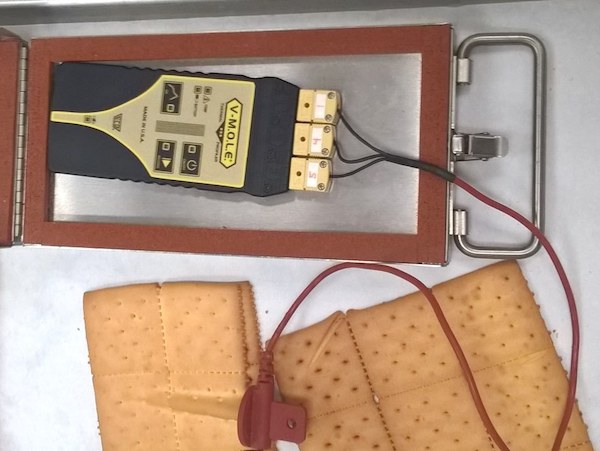
The basics
Crackers are usually made with wheat flour, water, yeast or chemical leaveners and inclusions of fat, sugar and other enriching ingredients. They come in an infinite variety of shapes, sizes, textures, flavors, colors and composition. Hundreds of varieties can be found in today’s market that come from different types of doughs.
As with other baked good such as cookies and english biscuits, all crackers have low moisture content and long shelf-life while stored in their package.
The most common crackers are:
- Soda crackers or saltine-type (yeast-leavened)
- Water biscuits
- Cream crackers
- Snack crackers
What goes into their formulation?
- Wheat flour, pastry (100%)
- Water (50–55% based on flour weight)
- Yeast (0.25%)
- Yeast nutrients (levels vary)
- Sugar (4–15%)
- Salt (1–2%)
- Fat (5–20% based on flour weight)
- Proteases (levels vary)
- Reducing agents such as sodium metabisulfite (levels vary)
- Chemical leaveners (0.5–3% based on flour weight)
- Non-diastatic malt syrup (1–10%)
- Inclusions (ground sesame seeds, whole grains, bran (levels vary)
- Dried flavored cheese (levels vary based on flavor profile desired)
How are they produced?
The general steps for making crackers are the same for any variety. Differences in mixing, leavening mechanism, laminating and baking conditions are possible depending on the product, and the levels and type of ingredients used.
The steps are:
- Ingredients scaling/metering
- Sponge mixing
- Sponge fermentation (12–24 hours, yeast and lactic acid bacteria)
- Dough mixing (sponge and remix)
- Resting
- Makeup (laminating, sheeting, rotary cutting and stampling)
- Baking
- Oil spraying (with hot oil)
- Cooling
- packaging
A closer look at the baking step
Crackers have special features that influence how they need to be baked, such as:
- They are leavened with yeast or chemically-leavened using ammonium bicarbonate, sodium bicarbonate, monocalcium phosphate (MCP) and sodium acid pyrophosphate (SAPP) in different combinations.
- Cracker doughs generally have a high water content (20–35%) compared to other sweet and rich goods such as cookies (10–20%).
- They are laminated, meaning the dough is sheeted into multiple thin layers.
- Cracker doughs spring or expand in the first section of the oven (zone 1) to achieve an open, flaky texture. This requires high humidity in the oven atmosphere and high heat input.
- Some crackers require a colour contrast between dark blisters and a pale background colour.
- Traditional cream crackers, soda crackers (saltine) and water biscuits are normally baked on heavy mesh oven bands. These bands are very versatile and require preheating to quickly transfer heat to dough pieces by conduction.
The baking step for crackers production is totally different from breadmaking. Crackers are baked in a low-speed continuous oven of considerable length, running at much higher temperatures than bread ovens.
Thermal profiling the baking step for quality control is best accomplished with the aid of an adjustable fixture which spreads each thermocouple sensor to equal the lateral spacing of the individual dough pieces. Such a profiling accessory makes it easier to deploy the data recorder, using both hands. At the same time, the sensor tips will drop into multiple dough pieces laterally (up to six), providing reliable data from the fast moving cracker oven (a technique also applicable to profiling cookie, biscuit and flat bread varieties).

Such ovens come designed with thermal zones that provide special baking profiles to the product as it moves throughout the equipment. Oven zones vary in humidity conditions (using different damper aperture levels), heating pattern or intensity.
Cracker baking requires a special short time/high temperature process as moisture evaporation from product (drying effect) must be gradual to maintain the quality and prevent checking phenomena in finished product.

